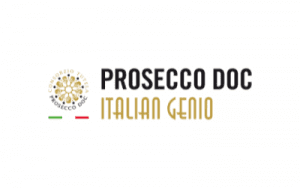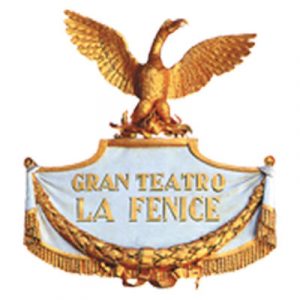I Carnevali delle Tradizioni!
Traditional Carnivals return to St Mark’s Square
On Monday 20th February, from 3 p.m. in St. Mark’s Square, the masks of tradition, from Puglia to Sicily, passing through Piedmont, Trentino Alto Adige, Basilicata, Molise, Calabria and Sardinia, land in the lagoon, bringing with them a long popular history!
For “Take Your Time For The Original Signs”, Venice Carnival 2023 is enriched with the masks that have made Italy’s Carnivals famous throughout Europe, in search of their own original sign.
They are “The Carnivals of Tradition”, identified by the Unione Nazionale Pro Loco d’Italia, which were presented at a press conference on 2th February by the Assessore for the Promotion of the Territory, Paola Mar, the Consigliere delegato to the Protection of Traditions, Giovanni Giusto, the Unpli president, Antonino La Spina, the Unpli vice-president, Fernando Tomasello, and the sole director of Vela spa, Piero Rosa Salva.
From Apulia will come the typical masks ‘Domino‘ and ‘Omene Curte‘: the first an elegant and mysterious mask that has inspired operas, comic and dramatic works, the second a mask created by poor people who, unable to spend money on making suitable clothes for the purpose, created it out of the country clothes in daily use in families. They are symbols of Bari’s Sammichelian Carnival, which was included in 2022 in the list of typical Italian Carnivals, with its carnival festivities where people dance every Thursday, Saturday and Sunday from 17 January to Tuesday, the last day of Carnival.
The Basilicata region brings its history with the tradition of Tricarico masks, ‘I Mash-kr‘, personifications of the bull and the cow that transform the body into a symbolic element that speaks to us through signs. This mask is a system of signs, symbols, clues and symptoms built on the basis of man’s knowledge, a synthesis of the culture of the time and which continues, even today, to convey messages, a mixture of intellectual experience and popular traditions.
The forces of nature will be the protagonists of the Carnival of Alessandria del Carretto, in Calabria, through ‘U pohicinelle bielle‘ and ‘U pohicinelle brutte‘, two masks with distinctive features.
Other important costumes include ‘l’Uerse‘, a beastly mask with large horns, which in the traditional feast went through the town in chains, in a symbolic representation of the power of nature being tamed and kept at bay, and ‘a Coremme’, which symbolises Lent and its role is to close the festivity.
From Sicily come the ‘Giardinieri‘ of Salemi, a mask dating back to the late 19th century of the ancient mask of the ‘Scalittaro’, characterised by a ladder, an extensible tool, through which it is possible to offer candies or cards to loved ones or passers-by during Carnival time. Still from Sicily comes the Carnival of Misterbianco, with the most beautiful costumes in Sicily and which, at the same time, is not only one of the longest-lived and most famous on the island, but also represents an invaluable heritage that is recognised at a national level by being enrolled in the REIS (Register of Sicily’s Intangible Heritage).
The carnival of Fonni, in Sardinia, arrives in Venice with the ancient masks of ‘s’urthu‘ and ‘sos buttudos‘, which represent man’s daily struggle against the elements of nature. Other masks are the ‘Sas Mascheras Limpias‘ representing elegance, beauty, goodness. Often accompanied by organ players, they usually invade the village streets to the rhythm of traditional dances and songs, performing the Fonnese dance in particular.
Also from Sardinia, and more precisely from Samugheo, come the ‘Mamutzones‘, representing the passion and death of Dionysus, the god of vegetation, whose festivals were celebrated in almost all ancient agrarian societies. Dionysus, the god who died and was reborn every year, like vegetation, is represented by the zoomorphic mask of ‘S’Urtzu’, which wears a whole goat skin, with its head attached.
The ‘Bataru‘ and the ‘Maribela‘ masks typical of Agnona, in Piedmont, arrive in Venice, bringing with them a history linked to French domination. The Bataru comes to life from a popular tradition that defines the inhabitants as ‘batari’. It is said that due to the sacristan’s over-eagerness in ringing the bells on a feast day, the clapper of one of them broke off, endangering the faithful gathered outside the church. The companion, Maribela, participates in the Borgosesi Carnival and all those nearby, bringing friendship and sympathy.
From Molise comes ‘the Tufara Devil‘, a symbolic expression of the contrast between life and death, between good and evil. People witness the acrobatics of the Devil, who jumps and rolls on the ground, repeatedly waving and beating his trident on the stones of the streets and on the doorways of houses, while the other masks attempt to take hostage with chains anyone who happens to be in their path. The Devil’s long race comes to an end towards evening when the trial and death sentence of Carnival is carried out.
The Unione Nazionale Pro Loco d’Italia (Unpli) with 6300 registered Pro Loco associations is the only national reference point for these associations (the first one was founded in 1881) which boast a total of about 600,000 volunteers. Thanks to the UNESCO accreditation as advisor to the Intergovernmental Committee for the Safeguard of Intangible Cultural Heritage and to the profitable and constant action undertaken in several areas, from projects to publishing initiatives, the Unpli has consolidated its role in safeguarding and protecting cultural heritage, becoming an institutional reference. There are 217 accredited organisations worldwide.


















